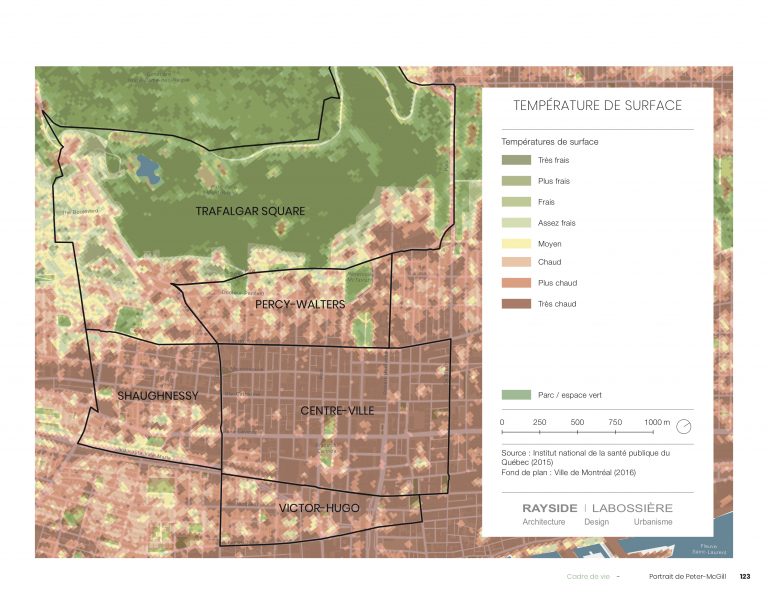Neighbourhood Profile 2020
Peter-McGill has gone through some major changes since our last neighbourhood profile was released in 2008. Our Families Downtown and Youth Action Committees came together to develop an updated profile in 2019, with a particular focus on the issues facing youth and families in the neighbourhood. We would like to thank Rayside Labossière for their work compiling this profile, which highlights the dynamism and diversity of our neighbourhood. We would also like to thank all of the partners who contributed to the project by participating in focus groups or sitting on the advisory committee. For the full version of the profile, please scroll down for the download link.
*Please note that the profile is only available in French. See below for a translation of some of the main findings.
Population
Living Conditions
Green Space
- Without taking into account Mont-Royal Park, the density of green space in Peter- McGill is 0.5 ha/1000 residents, much lower than the Montréal average.
- In this area, 41.7% of the surface is subjected to very hot temperatures as outlined by the Institut national de santé publique du Québec. Comparatively, only 20.4% of the Island of Montreal is in the same situation.

Housing
- Housing is located, for the most part, in 5+ story buildings.
- Housing units of 1 bedroom or less dominate the real estate market, and 1 household out of 10 feel that their apartment size is too small, a rate that is higher than the Montréal average.
- The Peter-McGill territory only has 440 social housing units (2.3% of households), which is less than 6% of all social housing units in Ville-Marie while the district contains 40.1% of the Borough’s population
Youth & Family Issues

Children in Peter-McGill
- In comparison with Montreal, families of Peter-McGill have few children (more than 60% have only one child), which is partially explained by the high cost of housing, few local services and limited access to sufficiently large housing units.
- Youth under 14 years old are few: amongst them we find a majority of children 0-5 (1,415 or 4% of the population).
- These numbers drop drastically in the 6-12 year old category, which could be explained by the fact that families move when their children reach school age (lack of public schools) or when families have a second child (apartment is too small).
Learning, School and Social Life
There are significant gaps between Peter-McGill and Montreal in terms of:
- Language competencies of children aged 0-4 years old: this is largely linked to the fact that almost 80% of families with children of this age have immigrated from outside Canada)
- Students in 6th grade who experience greater challenges in terms of lifestyle, the family context and bullying. Many believe that they lack support in their environment, particularly in school.

Immigration
A multilingual, international neighbourhood
- Peter-McGill has 22,260 first generation immigrants, representing 63% of the population.
- 13.8% of non-permanent residents in Montreal live in Peter-McGill, likely due to the presence of 2 major universities and several colleges.
- Almost half (48.3%) of Peter-McGill residents’ maternal language is a non-official language
- 27.6% of the population (9,800 people) speak a non-official language at home.

